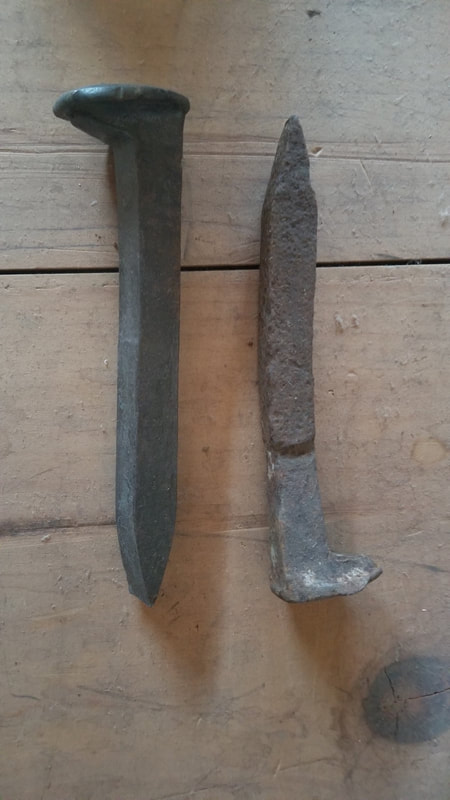|
When I first started my service term at the Martinsburg Roundhouse, I was familiar with historic tourism but I didn’t know anything about the roundhouse. Though I grew up in Martinsburg I had only visited the building once for a local festival. I didn’t really learn any of the roundhouse’s history until I started my service. Prior to meeting the site supervisors at the interview, I didn’t know anyone who volunteered or knew a lot about it. The first project assigned to me at the Martinsburg Roundhouse was to create an inventory of the numerous artifacts housed at the site. It is also the project I have worked on the longest and there are a few remaining artifacts that need to be tagged. When I started this process I felt overwhelmed. There are hundreds of items and documents stored at the Martinsburg Roundhouse. And new artifacts come into the site a couple of times a month, typically donations made by family members whose fathers and grandfathers worked at the roundhouse. Creating an inventory and tagging artifacts at the roundhouse has involved looking at lots of railroad spikes and railroading tools. I occasionally have been completely stumped about what an object is. Part of the process of researching and identifying the unknown objects at the roundhouse has been the extensive use of Google Lens and online railroad tool catalogs. During this project, one of my favorite ways to identify artifacts has been by collaborating with past and current railroad employees. One of the people I have talked to about the variety of tools and objects at the roundhouse is Jim. Jim worked at the Martinsburg Roundhouse from about 1949 until 1985 when jobs were moved from Martinsburg to Barboursville. During his visits to the roundhouse, Jim has identified several objects. Some of the more peculiar pieces, the ones that he struggled to or wasn’t able to identify, he told me were specialty made at the Martinsburg shops to address a specific need at the time. Another person who has been helpful as I attempt to name these objects is Mark. Mark works for CSX and is supervising an ongoing project in Martinsburg, and is frequently on the roundhouse property. Yet Mark’s connections to the roundhouse are deeper than working for CSX, Mark’s great-grandfather worked at the Martinsburg Roundhouse shops. Throughout the late summer and early autumn, he has made several visits to the roundhouse, including coming on a tour of the site with his mother and daughter. During his visits to the roundhouse, Mark has been incredibly helpful in identifying the artifacts housed in the roundhouse. One day I was losing my mind trying to figure out what an object was. My running theory was that it was a bucket from a digging tool. I was exhausting my enthusiasm for research by scrolling through website after website. Then Mark walked into the office, picked up the object, and casually told me that what I was looking at was a rail brace, which sits against the rail supporting it. Mark has been helpful in other ways. He also brought in a retired railroad worker, Stevie. Stevie helped me identify some of the more challenging artifacts at the Martinsburg Roundhouse. The volunteers and board members care immensely about the artifacts at the roundhouse. Volunteer and tour guide, Mike Giovannelli, brims with excitement every time he leads a group into the site’s artifact room. Yet I have found that some of the people who care the most about the artifacts are those who have worked on the railroad.
Claire TryonClaire served as a Preserve WV AmeriCorps member with the Berkeley County Roundhouse Authority during the 2019-2020 program year. Comments are closed.
|
Preserve WV StoriesCategories
All
Archives
August 2023
|
Get Involved |
Programs |
Contact UsPreservation Alliance of West Virginia
421 Davis Avenue, #4 | Elkins, WV 26241 Email: [email protected] Phone: 304-345-6005 |
Organizational Partners:
© COPYRIGHT 2022 - PRESERVATION ALLIANCE OF WEST VIRGINIA. ALL RIGHTS RESERVED.




 RSS Feed
RSS Feed



